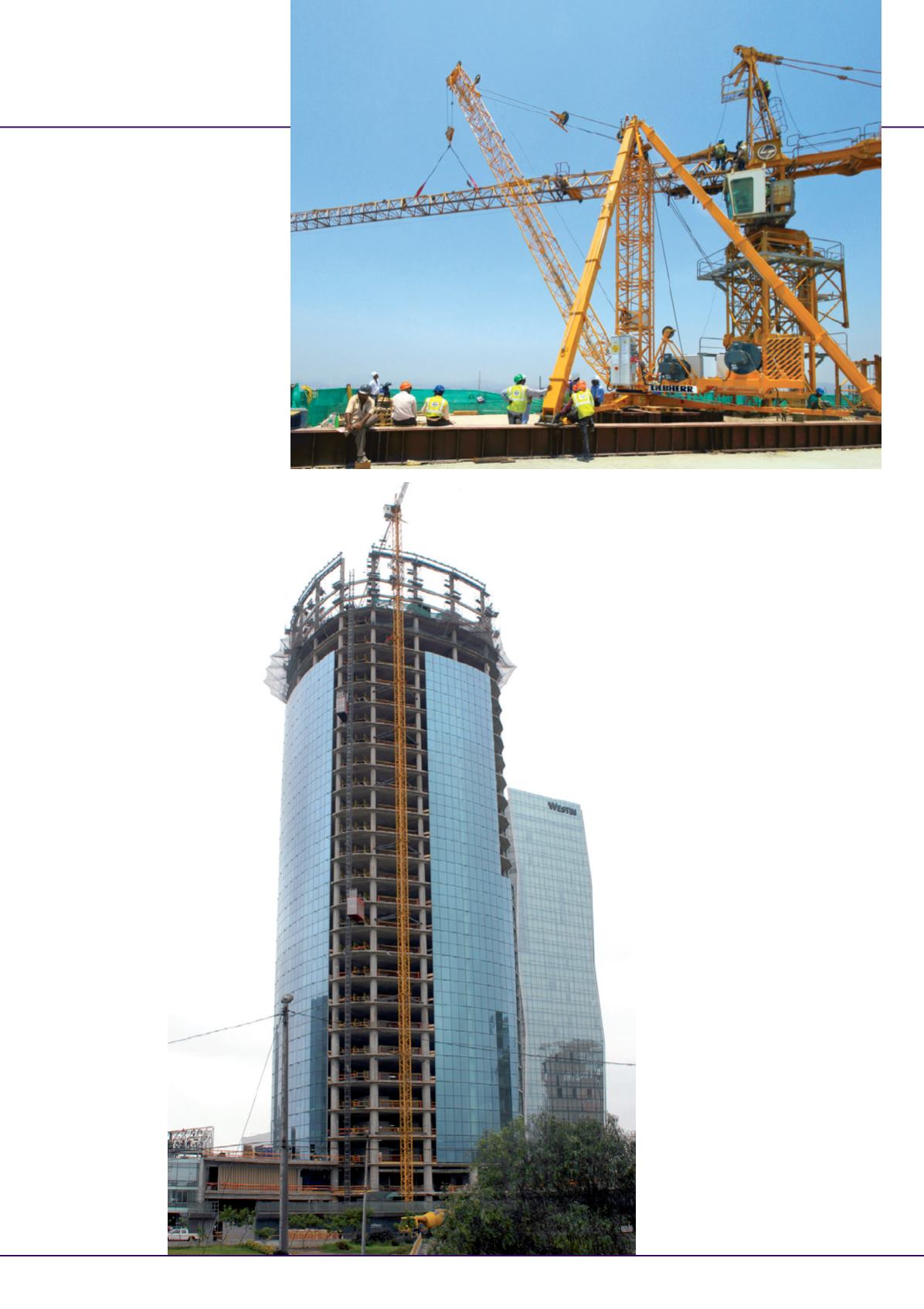
international
construction
september 2013
HIGH RISE
32
The rise of the super skyscraper
consider on high-rise developments,
not only for workers at the top of the
building, but for anyone on the ground
below. Many high-rise developments are,
by their very nature, being constructed
in urban areas, and this is certainly true
of Saudi Arabia’s US$ 8 billion King
Abdullah Financial District, where 40
multi-storey towers are currently under
construction across a 1.6 km
2
site.
Scheduled for completion in 2016,
the development will host banks,
financial institutions and professional
service companies. But construction is
presenting a logistical challenge, with
almost complete multi-storey buildings
under construction next to foundations
where piling work has yet to begin,
according to manufacturer Combisafe.
A total of 1,450 steel mesh barriers and multi mesh
barriers have been supplied by Combisafe across the King
Abdullah Financial District. With so many people at
work across clusters of buildings, Combisafe said
edge protection and fall safety systems were
vital to ensure optimum safety at all times.
Offering a projection of 3.3 m, these
safety nets are designed to absorb falls
from heights of up to 6 m. In addition,
Combisafe supplied 18 Preston
Superdeck platforms, which provide
access for heavy building materials
to be delivered by crane to high-rise
buildings. The platforms extend 4.5 m
out from the side of a building and can
carry up to 5 tonnes.
As work on any high-rise development
progresses, contractors will face new
sets of challenges. These include how
to remove the equipment that has
been climbing with the building as
construction nears completion.
Contractor Larsen & Toubro (L&T)
used a Liebherr 200 DR 5/10 Litronic
Contractor Larsen & Toubro used a Liebherr 200 DR 5/10
Litronic Derrick crane to dismantle a tower crane on the
220 m Kohinoor Tower in Mumbai, India.
Alsina’s
Mecanoflex
formwork was
chosen for the
installation of
the basement
area slab for
the 26-storey
Begonias Tower
in Lima, Peru.
Constructora
AESA is building
the tower for
developer
Cúbica Gestora
Inmobiliaria,
scheduled for
completion this
year.
Derrick crane to dismantle a tower crane that had been used to
help construct the country’s tallest commercial building – the
220 m Kohinoor Tower in Mumbai, India, which topped out
this year.
According to Liebherr, towers above 200 m tall are becoming
more and more common in India. The 200 DR 5/10 can
dismantle cranes weighing over 300 tonnes, and can lower heavy
parts from great heights while preserving a safe gap between the
part and the building.
Removal
Once the Kohinoor’s tower crane had been dismantled and
lowered to the ground, the derrick crane was stripped
down in to its individual parts and lowered into
the buildings lift shafts.
The maximum dimensions of the individual
components are 2.2 by 1.1 m by 1.1 m,
and the maximum weight of any one
component is 1,000 kg.
David Griffin, sales director at Liebherr-
Werk Biberach, said, “We see huge
potential for the execution of several
dismantling projects using the Liebherr
derrick crane on L&T sites. In fact, there
would appear to be enough work for
additional derrick units in India.”
Nearly 600 buildings of 200 m or
more are currently under construction
or planned to be built around the world
over the next few years, according to the
Council on Tall Buildings and Urban
Habitat. And plans are already in place for
20 more 500+ m towers to be built in the
future.
With new records being broken in
the high-rise sector every few years, it
will certainly be interesting to see how
manufacturers continue to experiment
with very strong, but light-weight materials
like carbon fibre in the coming years.
iC


